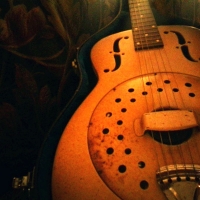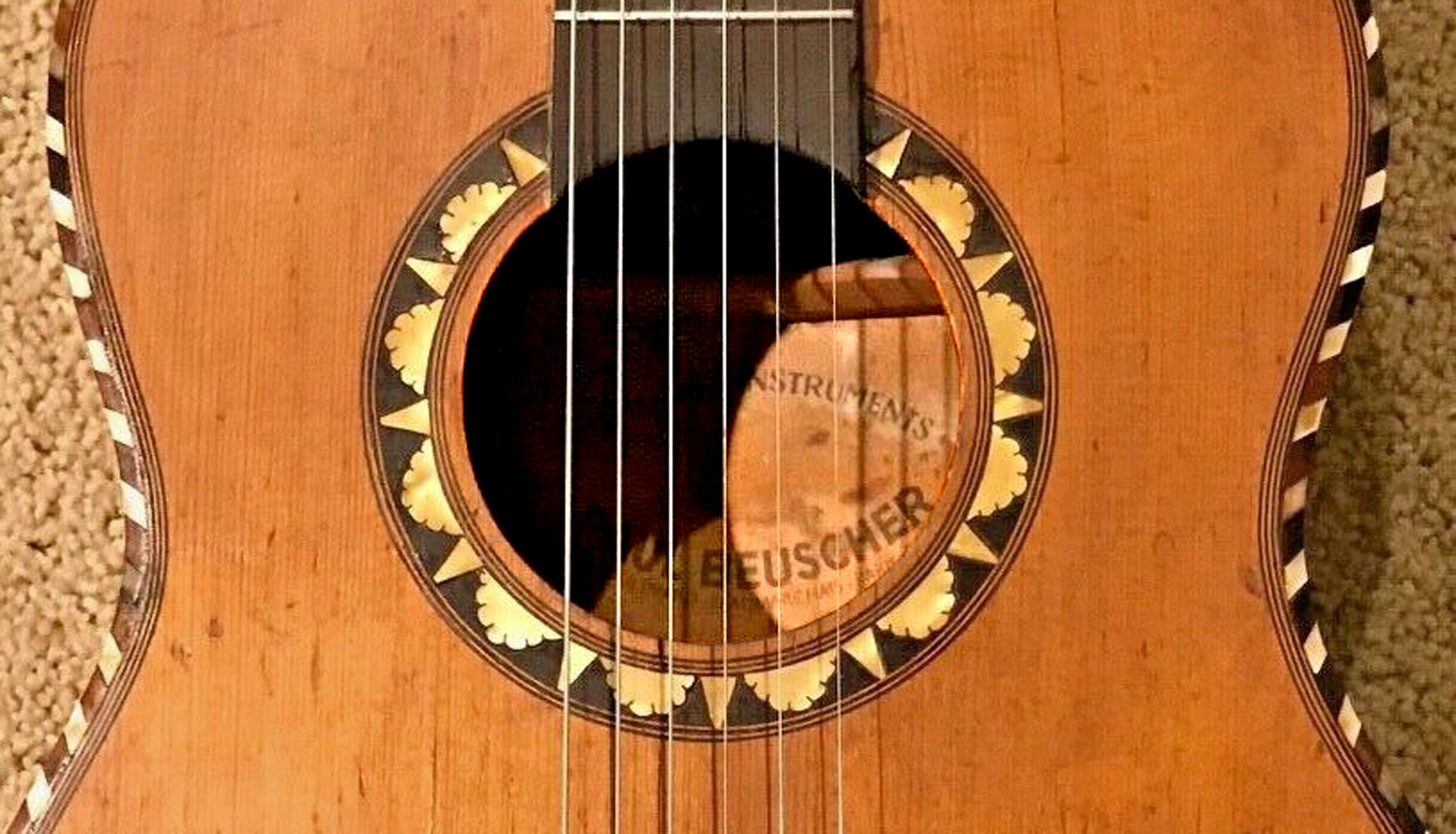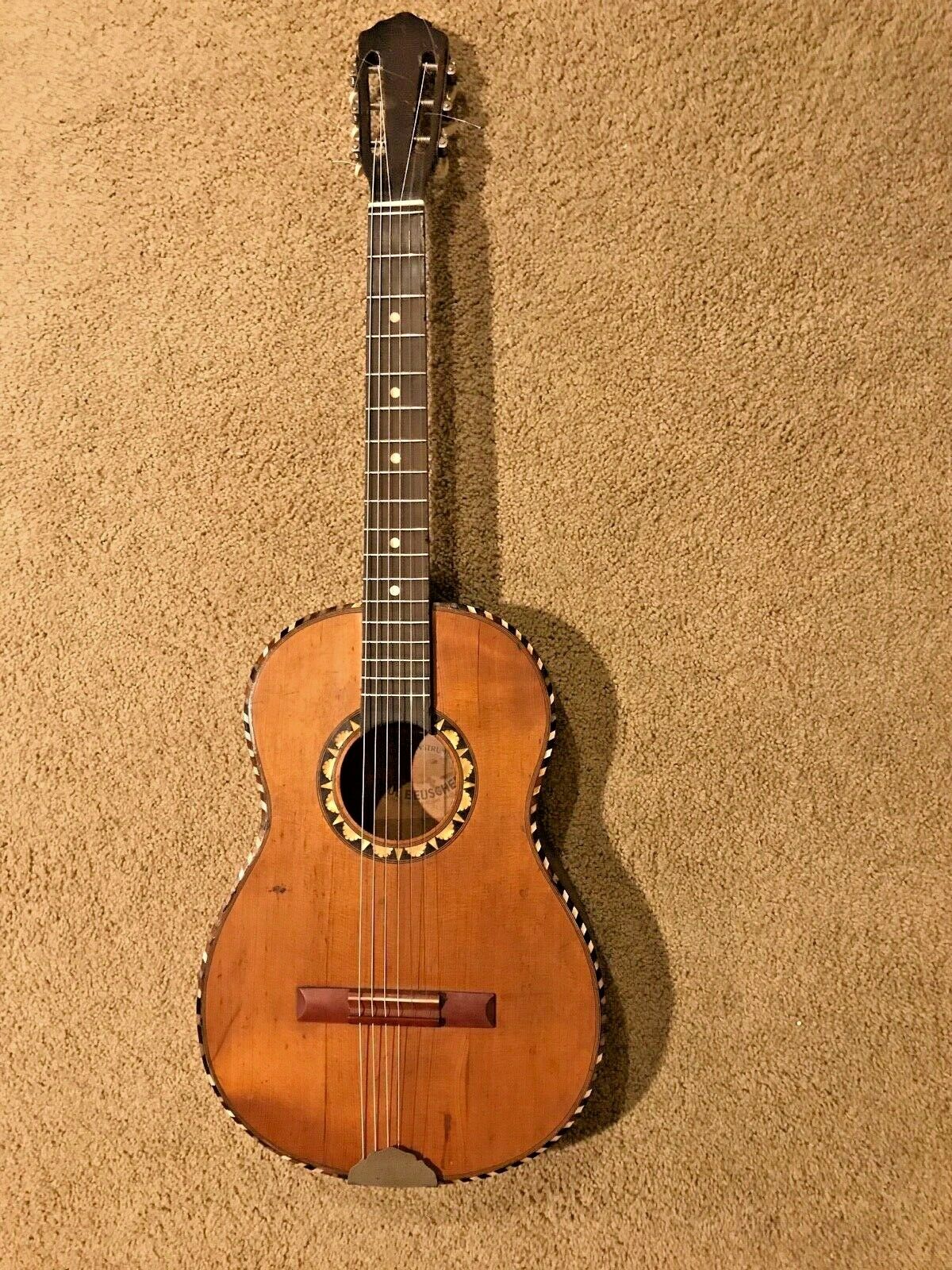DjangoBooks.com
Welcome to our Community!
Categories
- 20K All Categories
- 1.1K General
- 476 Welcome
- 59 Archtop Eddy's Corner
- 146 CD, DVD, and Concert Reviews
- 384 FAQ
- 26 Gypsy Jazz Italia
- 26 Photos
- 202 Gypsy Picking
- 21 Unaccompanied Django
- 15 Pearl Django Play-Along Vol.1
- 17 Gypsy Fire
- 45 Gypsy Rhythm
- 1.4K Gypsy Jazz University - Get Educated
- 130 Gypsy Jazz 101
- 224 Repertoire
- 218 History
- 707 Technique
- 51 Licks and Patterns
- 6 Daniel Givone Manouche Guitare Method Users Group
- 20 Eddie Lang Club
- 1.3K Gypsy Jazz Gear
- 801 Guitars, Strings, Picks, Amps, Pickups and Other Accessories
- 457 Classifieds
- 49 Recording
- 62 Other Instruments
- 18 Violin
- 5 Mandolin
- 22 Accordion
- 7 Bass
- 10 Woodwinds
- 347 Gypsy Jazz Events
- 143 North America
- 109 Europe
- 95 International
In this Discussion
Who's Online (0)
Paul Beuscher guitar?
 larrynolte
Saint Louis, MissouriNew
larrynolte
Saint Louis, MissouriNew
Greetings,
I hope no one will mind me getting off topic here, but I've just purchased a Paul Beuscher guitar and I'm having trouble identifying it. I believe it is certainly not in the gypsy category, and probably a bit too large to be a parlor guitar. It is rather plain, except for the decorative inlay. But, while trying to find information by Googling, all links seem to lead back to Djangobooks eventually so I thought I would try.
I would like to determine the age, the region and if possible the maker of this guitar. I am posting a few photos. Is there a source, a website, a book which would point me in the right direction?
Much appreciation for your attention, and any pointers you may have for me.
Larry












Comments
Not definite but a hunch says the tenth fret marker and the fancy inlays suggest an Italian maker from the mandolin tradition, either from Naples or Catania. Also probably made before the early '60s as Beuscher was always playing makers off against each other to get the lowest prices, but from the mid-60s they bought guitars in from Japan, cheaper still.
Chris, I very much appreciate your response. The label seems similar to some Beuscher guitars which are listed on this site as 1950s models from Paul Beuscher. The guy I got it from says 1930s, probably based on the inlay work, but 1950 may end up being more accurate.
I've been doing a lot of digging, following Google down various rabbit holes, and I did find a similar guitar on a guy's Instagram page. He lists it as "50s" and "renegerome." To be honest, the name meant nothing to me. Unfortunately, his Insta account is defunct, but I'm posting a picture below. I ran across another example which referred to it as a "mirecourt guitar," which again meant nothing to me. But after a bit of research I've pieced together that Mirecourt is an area in northeastern France famous for stringed instruments, and that Rene Gerome (or Getome) came from a family of luthiers there. He made some very beautiful gypsy guitars as well.
Finally I stumbled on this YouTube of a guy playing an almost identical guitar, except for the tail piece: https://www.youtube.com/watch?v=SNPTWU4mXiM
He describes the instrument this way: "Guitar built in the 50s in a small shop in Mirecourt, France by René Gérôme; it has a spruce top, maple back and sides, 3 pieces mahogany neck, rosewood fingerboard and bridge, ladder bracing, ebony rosette with mother of pearl inlays, ebony purfling, mother of pearl and (fake, hopefully) tortoise shell biding."
So, I'm going with that, unless or until I find other information. I could always be wrong. Thanks again for responding.
Lar
FWIW - my late 1940's Rene Gerome has an almost identical 10-fret neck & headstock design and had an identical tailpiece (since changed).
I'd guess French and post-war, as opposed to Sicilian and 1930's.
There was an archive of pics from the atelier Gerome, but it seems like it's now gone , see my post from a few yeas ago :
-Andy-
p.s. if you search for "Rene Gerome" and "Guitare" (with an e- that's the French spelling)
you'll see a few similar / identical guitars to yours: e.g.
http://www.les-grandes-guitares-acoustiques.com/t1627-guitare-r-gerome-vendue
Andy, Thanks for the confirmation, and the tip regarding using a french spelling for "guitare." It did indeed bring in some new results. This research project has been truly informative for me, starting with the difference between 9th and 10th fret marker. Digging into the history of French lutherie has been eye opening. Here is a link to an article about the development of a museum district in Mirecourt with a lot of information on Atelier Gerome, and some photos. It is in French but if you're using Chrome you can do the translation on the fly:
And I don't even have the guitar in hand yet. In their combined wisdom, somehow eBay and FedEx conspired to have the package delivered to Atchison, Kansas, three hundred miles from where I live. But it is safe and secure in good hands.
I'll sign out with a photo of Rene Gerome and his sons from 1948.
Of course. Sorry for my mistake, Gerome did do a lot of fancy inlays, I just never realised he also did the 10th fret thing too, I had always associated that with the Italian/Sicilian luthiers, so I wonder, did Gerome also start by making mandolins first? Anyway, very nice, and unusual guitar, and yes, digging into the history can be interesting too.